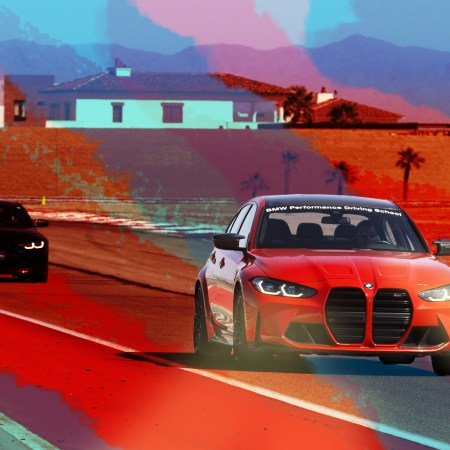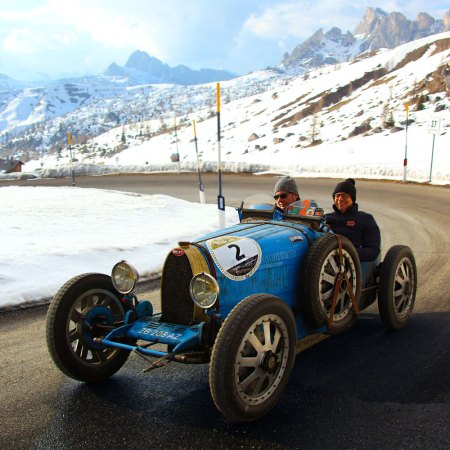Marcus Ericsson first caught the racing world’s attention while rising through the ranks of Formula BMW, GP2, and British Formula 3. After winning the All-Japan Formula Three Championship, he was promoted to Formula 1, where he competed for five years, before making the move to the NTT IndyCar Series.
Ericsson now drives the No. 8 Dallara DW12-Honda for Chip Ganassi Racing. Last year, the Swede cemented his place in motorsports history by winning the 106th Indianapolis 500. Ahead of this weekend’s first Indy Car race on the streets of St. Petersburg, we spoke to the motorsport star spoke with the motorsport star to discuss the training, strategy and instincts that secured a kiss with the iconic bricks.
I was familiar with the Indy 500 even when I was growing up in Sweden. I was a kid when a Swede named Kenny Bräck was racing IndyCar and won the Indy 500 in 1999. I remember watching the race with my dad. It’s a memory that sticks out strongly in my head. So when the opportunity came to race in the IndyCar Series after competing in Formula 1, there was excitement about getting to compete in the 500.
One of the elements that sets IndyCar apart from other motorsports is that it’s a one-spec series. So opposed to those other series where it’s all about what car your team is able to afford, everyone has a chance. Sure, there are adaptations that people will make with their builds, but because of the even playing field, it’s more about the drivers, the team, and how they gel together. I find it more fulfilling as a driver, because there is more that you can do to give your team that edge.
The cars that we drive are open-wheeled with about 700 horsepower, doing up to around 240 miles per hour on some tracks. There’s no power steering in the car, which means it’s tough to make it go where you want. The races are over two hours, with the Indy 500 going closer to three hours on the track. The level at which we’re maneuvering the vehicles is extremely high, and it’s much more than simply driving a car. We commonly pull up to five Gs, or five times the force of gravity, going through some corners, so it can be pretty extreme on the body and the mind.

Back in the day, most professional race car drivers drank quite a bit and even smoked in the car. That’s not really the case anymore, and most of us are taking our physical fitness very seriously. I have a trainer that I’ve been working with for around 10 years, and he travels with me to all of my races. Over the course of our work together, we’ve created a program that addresses the upper body strength and endurance that I need while sitting in the car for hours.
For most of the races, we don’t have a whole lot of time to prepare, because everything is done in the course of a weekend. But with the Indy 500, we have closer to a month to focus on this one particular race, which makes sense because it’s the Super Bowl of the sport. There are practice sessions and a whole qualifying weekend that we go through. So there is much more time to focus on your training and game plan for the track.
There’s a lot of pressure going into the Indy 500, because of all of the build-up and the history associated with the race. This last Indy 500 was my fourth try. I felt like I had been fast in each race before, and I was in a good position every time, but I missed out on winning because of small mistakes. Navigating a course with 33 cars on the grid, all going over 200 miles per hour…there are a lot of places where small mistakes can have serious consequences.
I tried to bring the lessons that I learned during those other three Indy 500s into the race. I’d been in a good position during my first 500 and spun out during a pit entry because I was going too fast. There’s a precise nature in which you have to bring your speed down from 240 mph to somewhere closer to 80 mph. I just remember thinking that I was on pace for a good result and then everything in my windshield became a blur, as I lost control of the car.
Spinning out, and even crashing — it’s part of the job. I’ve had some big crashes over the years. The worst one I had was while I was racing Formula 1 and I hit the wall with the impact of 75 Gs. I was taken to the care center after, even though I thought I was absolutely fine because of all of the adrenaline pumping into my system. I ended up peeing blood, so I needed to stay and recover there for a little while. In the end, there was nothing really wrong and I was able to heal up fast. Luckily, the safety protocols that we have in the machines at IndyCar are really advanced.
The more experiences like that you have, the more familiar you are about when you’re at that limit. You also learn what places are better to spin out than others, depending on what’s around you and how fast you’re going at that time. I’d rather take a risk when I’m going through a corner at 100 mph, rather than going full speed at 200 mph. And having been in a few crashes, you learn how to deal with it better. Everything slows down for you.

I believe that having a great race starts before the day of the race, with getting a good, quality rest. I’ve gotten better at falling asleep these days, but there are still nights when it is difficult, especially with a race like 500, where there are a lot of thoughts that are running through your head. I’ve started working with a mindset coach to help me get past those hangups, and there are a few breathing exercises that I’ve learned, which really help me find that inner quiet. I try to get eight hours of sleep, but as long as I get six I’m in a good place.
Race day is a stressful environment, with media, sponsorship commitments and team meetings. I’ll use my breathing exercises in the midst of that chaos as well to stay centered. I try to be active in some way, a little cardio or stretching, so that I can get the blood pumping. My go-to meal before a race is chicken, rice, and vegetables without any sauce. Something simple and bland, that I can use for fuel but isn’t over complicated. I’m not usually that hungry before a race, but I eat because I know I should.
There is nothing like being on the track during the Indy 500. There are 350,000 people at the event, making it one of the biggest sporting events in the world, spectator-wise. The pre-race show is always insane, with star-studded performances and fighter jet flyovers. It can be hard to keep focus with all those outside distractions. I try to think of myself in a bubble when I start getting strapped into the car.
There is a ritual I do there sitting in the car, where I press my left wrist three times with my right hand. That’s an indicator to my body that it is time to go. Kind of like a primer, it helps me get in my zone. I started to visualize the beginning of the race in my head. I want to envision where to put my car and how I want the first couple of turns to go. Once the race kicks off I go into a kind of autopilot, executing on what I want to happen.
I don’t want to think too much when I’m driving, I just want to trust in our game plan and my instincts. Because when you start thinking too much, that’s when you start making mistakes. This 500 I was starting in the fifth position. I had a plan for going around the guy who was starting next to me and I was able to accomplish that. My plan was to stay in the top five during the race, until we hit the last 12 laps.
Meet the Man Behind John Krasinski’s Action Hero Transformation
Trading in Jim Halpert’s grin for Jack Ryan’s gun wasn’t easyI was able to do that for six laps, until I needed to make a pit stop and got blocked in the pit lane. I had to slow down to avoid hitting another car, and it put me back in the eighth position. I knew it was going to be a tough challenge to make up those placements, because it’s really hard to pass cars in this race, especially given how similar the machines are in capabilities.
That was a moment that could have ruined my race mentally, but I stayed on point and stuck to the plan. I was able to pick off a few guys during the following laps. During the last pit stop, I came out in third. I overtook the two guys ahead of me pretty quickly. From there, I was able to open a gap and get a lead for the last 15 laps. From there, it was all about counting down the laps, and keeping that lead. I had a big enough gap that the guy behind wasn’t going to be able to catch me.
That’s when Jimmie Johnson crashed, and the red flag to stop immediately went up. My heart sank when I saw it. I had to sit with the race stopped with two laps to go, for 10 minutes, with the engines shut off. I was sitting there with nothing but my thoughts. Here I am leading the biggest race in the world, one that changes your life, and I can do nothing but sit on my hands.
This was the biggest challenge of my career, no doubt. I knew I needed to put out one of the best performances to keep my lead. During restarts, it is very common for the leader to be overtaken. I felt confident still, but as I’d been sure of my victory before the race was stopped, I was put in a very uncertain situation. My team helped me through it, talking to me on the radio. I reminded myself that I was in the biggest race in the world, and it’s not supposed to be easy to win, it’s supposed to be tough. This was just another challenge that I needed to overcome to become a champion.
There was no time to be angry or upset, I had to focus on what my new plan was. Once the race started again, Pato O’Ward, who is one of the best drivers in the sport, was trying to overtake me hard. I knew that I couldn’t give in, and I couldn’t give him an inch. Our cars were side by side on the first turn of the last lap, going 230 mph, and it was an all-out battle. There is only an inch or two between our wheels in this moment. These are split-second decisions that we are making, and can’t be planned for.
There’s a dance that you do when you’re in a close contest like that. You don’t want to crash, but you can’t show weakness or the other guy is going to take advantage. There have been situations where I’ve backed down, either because I wasn’t in a better position or I knew that a crash could occur if I didn’t. But this race, on this lap, was not one that I was going to let up on. I made it known to him that I was not backing down, and that the lead was mine to keep.

I didn’t feel like I had the win until I crossed the line, because nothing in racing can be taken for granted. There are so many things that can happen even if you have the lead going into that last corner. Our cars are put under enormous strain, they can break down at any point, and that small loss of momentum can change everything.
I let out this massive scream when I crossed that line, though. There were so many emotions going through me. The team was screaming too, and I could hear them on the other end of the radio. They were trying to ask me all of these questions, but I honestly couldn’t even answer them for a few minutes because I just kept screaming.
I will always be an Indy 500 champion. That is the mark I’ve made on this rich history of motorsports, and as a driver it’s an amazing feeling. Then there are all the accompanying monuments, like the ring, and our faces being added to the Borg-Warner Trophy, as well as a Baby Borg trophy that we get to keep at home. Being an Indy 500 champion is special to me, but it doesn’t mean I need to slow down. I’m looking to keep pushing the limits.
This article was featured in the InsideHook newsletter. Sign up now.























